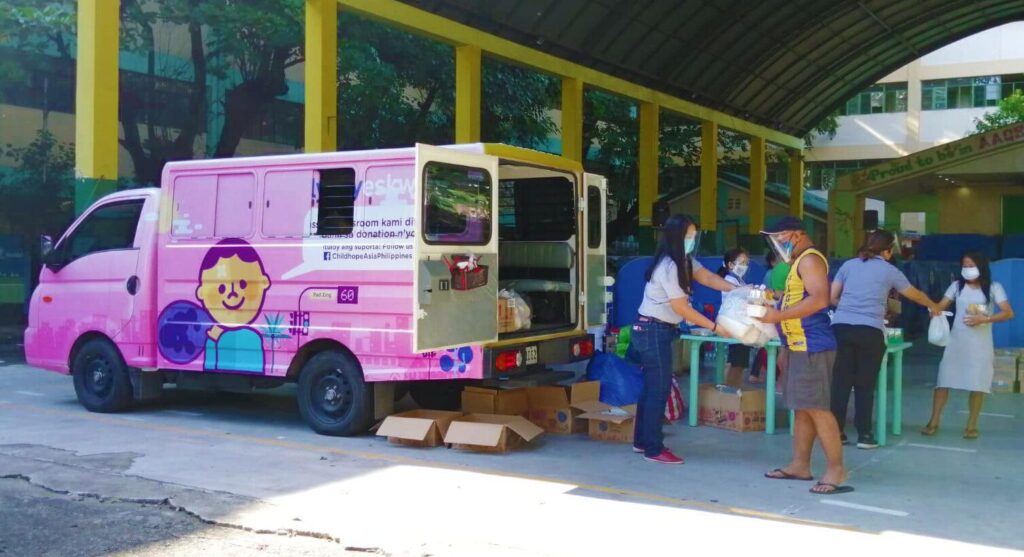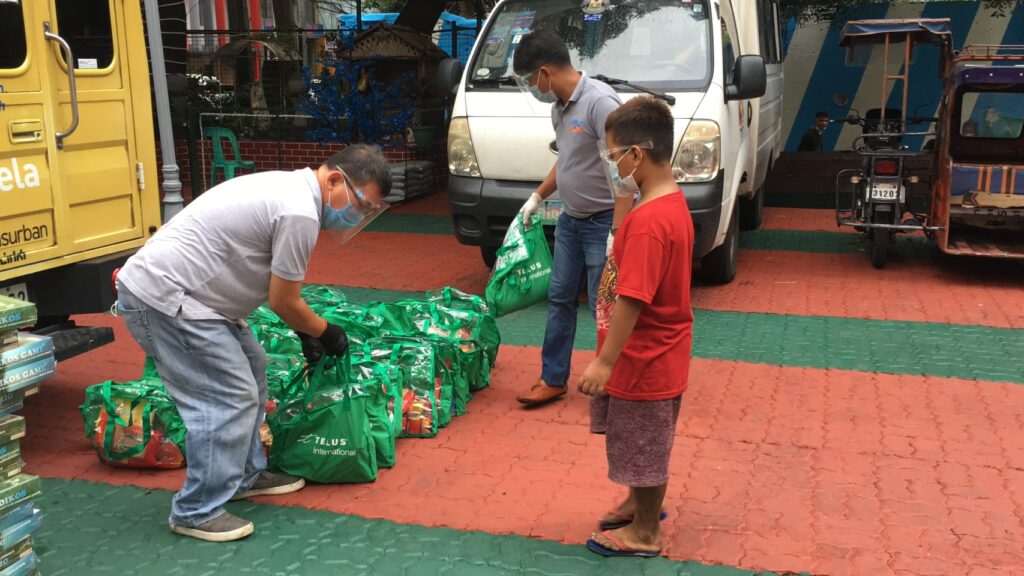With everything that’s happening globally—a pandemic, a war breaking out, inflation, and the ever-constant poverty and hunger—we can only do so much to help in our own little ways. Among the casualties of the chaos across the globe, the perpetual victims are the children. They are the most vulnerable members of society, and yet they face the worst consequences of every global conflict. But when children are living in the streets, the risks of bodily harm or even death is significantly higher.
Aside from these acts of violence, homeless children also have to contend with the ever-present threat of starvation. As the number of homeless children in Metro Manila continues to rise, non-government organizations had to step in to fill in the gaps of the government’s role in social welfare through volunteering efforts. Aside from social volunteerism, people are stepping up by spreading the word to encourage donations to pour in. Indeed, a donation drive has never received so much encouragement and acceptance from society as ever before.
The Basics of Starting a Donation Drive
Before anything else, let’s differentiate charity from donation. Charity is an organization set up to provide help and raise money for those in need. On the other hand, a donation is a gift for charity, humanitarian aid, or to benefit a cause. Charitable donations can be in many forms, including cash, services, retail products, and household goods.
Types of Charity Cases
To qualify as a charitable contribution, the recipient must be a bona fide charity. Below are the types of charity cases.
- Education Charities: For over 250 million children and young people around the world, education is only a dream. Poverty and conflict keep education out of reach—especially to those children who live in the streets. Hence, Childhope makes education a priority among its long-term and development-based efforts.
- Food Charities: People in all parts of the world experience food scarcity, with more than 75% of the population being food insecure. Food drives aim to provide food and other basic human needs to all the poor people and work tirelessly so people never have to live in fear of food insecurity.
- Health Charities: Proper healthcare systems remain unattainable luxuries in some regions of the country. To address this, non-government organizations spearheaded efforts to provide access to health and medical services to those lacking access to them. An example of this is Childhope’s KliniKalye, a mobile health clinic that comes with free e-consultations.

How to Plan a Donation Drive for a Cause
With the continuous effects of the pandemic and insufficient government funds; one might feel the urge to help and even organize a donation drive—food, clothing, and the like—for the sectors experiencing poverty. No matter how noble the cause, one must keep in mind that there are specific laws and rules applicable to donations or solicitations.
The Department of Social Welfare and Development (DSWD) requires any person, corporation, organization, association or any other juridical entity desiring to conduct regional and national fund campaigns in the Philippines to first secure a Public Solicitation Permit, under DSWD Memorandum Circular 17-14, which implements Presidential Decree (PD) 1564 (Solicitation Permit Law). Only after that are they able to solicit or receive contributions from the public for charitable or public welfare purposes.
Having that said; here are things to consider when planning for a donation drive.
1. First things first: Build a planning team.
Hosting donation drives is a very important activity for any charitable organization because you will need substantial financial amounts to run your operations. So it is in your interest to make donating to your company as attractive as possible. As a charitable organization, it is imperative that you build a reputation for trust, especially with your donors. Be circumspect with how and where you spend your money. Earn the respect of everyone, including your beneficiaries and partners.
Keeping in mind those mentioned above, first, build a planning team. With a planning team, you can identify, weigh, and categorize assigned responsibilities; after which you can prioritize and create an operation and response plan. You can choose to start with a few people, especially when your operations are still small, and you want to conserve your money.
2. Set goals and guidelines.
Be transparent with where your donation drive efforts are going. Making sure the clarity of the set goals and guidelines is communicated well to all the stakeholders. Be prepared to have your financial reports, receipts, and contribution revenues presented with transparency. Hosting a donation drive requires hard work and patience. You will need inspiration to achieve your goals and it will make a big difference if you are determined to solve a problem that is close to your heart.
3. Spread the word: Reach out to an organization.
Once you have decided on your advocacy, research and see if there are organizations that are already doing what it is you want to do. Focus on a cause that is not getting much attention or augment what others are already doing. You need to get the word out that you exist publicly. Choose the platform you find most effective for your audience; whether it be television, radio, newspapers, magazines, website, or social media networks.
Launch a crowdfunding campaign. Needless to say, donors can help to raise awareness, and what better way to spread the word than in a crowdfunding campaign? After all, it is a low-cost way to raise money and donors can use the social media sharing features available on most platforms to spread the word.
4. Finally, don’t forget to promote your primary giving methods.
For instance, let donors know how simple it is to donate through fund transfers and physical means when they’re visiting your facilities. Thus it’s important to make your location known. Share visuals on your social media accounts to show supporters that the giving process only takes a couple of minutes to complete.

Giving is the Greatest Wealth: Reasons to Give to Charity
“It is more blessed to give than receive.” It’s an oft-repeated saying when donation drive or charity efforts are involved, and for good reason. A report from Charities Aid Foundation involved interviewing donors for the reasons behind their gratuities. Below are some of the reasons people give to charity.
1. Ethics
People gave to charity as they felt a sense of duty to give back to society and tackle inequality, using their own good fortune to help others.
2. Belief in a Specific Cause
Almost every donor interviewed identified with a specific cause they felt passionate toward. And for 75% of them, this was the key influence behind their giving. The causes that donors supported varied, with some concerns broader than others—such as international development or the arts—compared to others that were focused (e.g. restoring old buildings).
3. Faith and Religion
Selfless giving is often a key component of many spiritual and religious belief systems. Likewise, an overwhelming number of donors pointed to their religious values as a key motivation for their commitment to charity.
4. Personal Experiences
Donors spoke of personal, life-changing experiences that sparked their giving. These varied from having directly experienced the hardships of the developing world to suffering a loss of a family member who battled a disease.
The reasons for giving are diverse and most people have over one influence motivating them to give. Some of the other driving factors for giving included:
- a belief that charities cannot do enough alone
- family
- the satisfaction they get from giving
- determination to leave a positive legacy

Childhope Philippines’ Continuous Efforts for Donation Drives
As a non-profit, non-political, and non-sectarian organization, Childhope Philippines’ principal purpose is to advocate for the cause of street children. We aim to continue working toward providing brighter futures for children whose plights are caused by working and living on the street.
There are millions of impoverished children on the street in the world. In different countries, there are various alternatives for street children, but these have limited initiatives. The role of Childhope is to act as a facilitator among the different organizations and bring them together and work with them in defending the rights of the street children. We believe the world community—local, state, and national—if challenged, can and will answer with a sense of justice and compassion with a resounding “We do care.”
Childhope Philippines actively responds to the call on how to help street children and youth through its Street Education and Protection (STEP) Program. Guided by the Caring-Healing-Teaching framework, the STEP Program has 4 major components. They put the best interest of the child at the center of the program and their holistic development as their primary goal.
Are you looking to make contribution to an organization with a deep commitment to changing deserving children’s lives? You can donate to Childhope today. Any amount of donation can make a big difference in a street child’s life.
